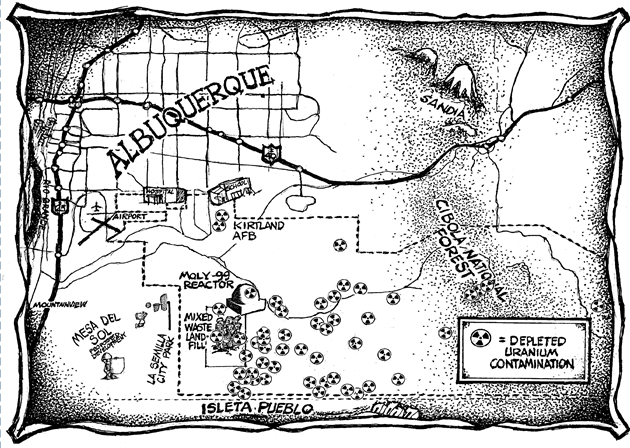
Heart of America Northwest
Files
Download Full Text (344 KB)
Document Type
Report
Date
9-2003
Description
In 2002, the Department of Energy (DOE) released the draft Hanford Solid Waste Environmental Impact Statement (DOE 2002). That draft called for the disposal of over 12 million cubic feet of low-level radioactive waste (LLRW) at Hanford in unlined near-surface disposal trenches. The draft EIS was withdrawn by USDOE following public comment, as urged by numerous official agency, advisory board and public commentators. In April, 2003, USDOE issued the Revised Draft Hanford Solid Waste EIS, which forecast that USDOE would dispose of up to 12.3 million cubic feet of LLRW in near-surface burial trenches.1 Sixty three percent (63%) of this LLRW would be imported to Hanford for burial. At an undefined future date, the Revised Draft EIS proposed that LLRW would be buried together in new trenches with up to 5 million cubic feet of Mixed Low-Level Waste, which is Low-Level Radioactive Waste mixed with hazardous chemical wastes.2 To develop a technical position on the proposal for use of Hanford newr- surface burial for Low-Level Wastes, Heart of America NW wanted to know if the Low-Level Radioactive Waste Burial Grounds meet the basic engineering requirements for such facilities and how they compare with other similar facilities and alternative potential disposal sites available to USDOE for these wastes. As such, this report represents the first independent, publicly available Cross-Site Comparison of USDOE Low-Level Radioactive Waste Burial Ground Alternatives.
Performing a complete engineering review of multiple facilities was clearly beyond the potential budget capacity so a proposal was proffered to limit the investigation to the geotechnical aspects of representative LLRW disposal facilities. This type of focused review was accomplished by visiting the sites and reviewing documentation on the sites. Performance standards and review criteria were identified and the disposal facilities were evaluated to determine how well they meet the performance standards. This is the basis for a comparison of the facilities.
This report presents the results of this study.
This research was completed money allocated during Round 3 of the Citizens’ Monitoring and Technical Assessment Fund (MTA Fund). Clark University was named conservator of these works.
If you have any questions or concerns please contact us at digitalrepository@clarku.edu
Publisher
Heart of America Northwest
Format
Keywords
nuclear weapons, nuclear weapons testing, environment, non-governmental organizations, United States Department of Energy, tribal governments, environmental cleanup, radioactive fallout, radioactive waste
Rights
Copyright belongs to the authors. Clark University was chosen by the non-profit peace and environmental groups as the conservator of these reports; our right to distribute these works ensures they remain available to the public in perpetuity as intended. Reuse at your own discretion with with due deference to copyright holders.
Location
Seattle, WA
Recommended Citation
Heart of America Northwest; Brodeur, John R.; and Pollet, Gerald, "A Review and Comparison of Low-Level Radioactive Waste Disposal Facilities" (2003). Heart of America Northwest. 6.
https://commons.clarku.edu/heartofam/6



